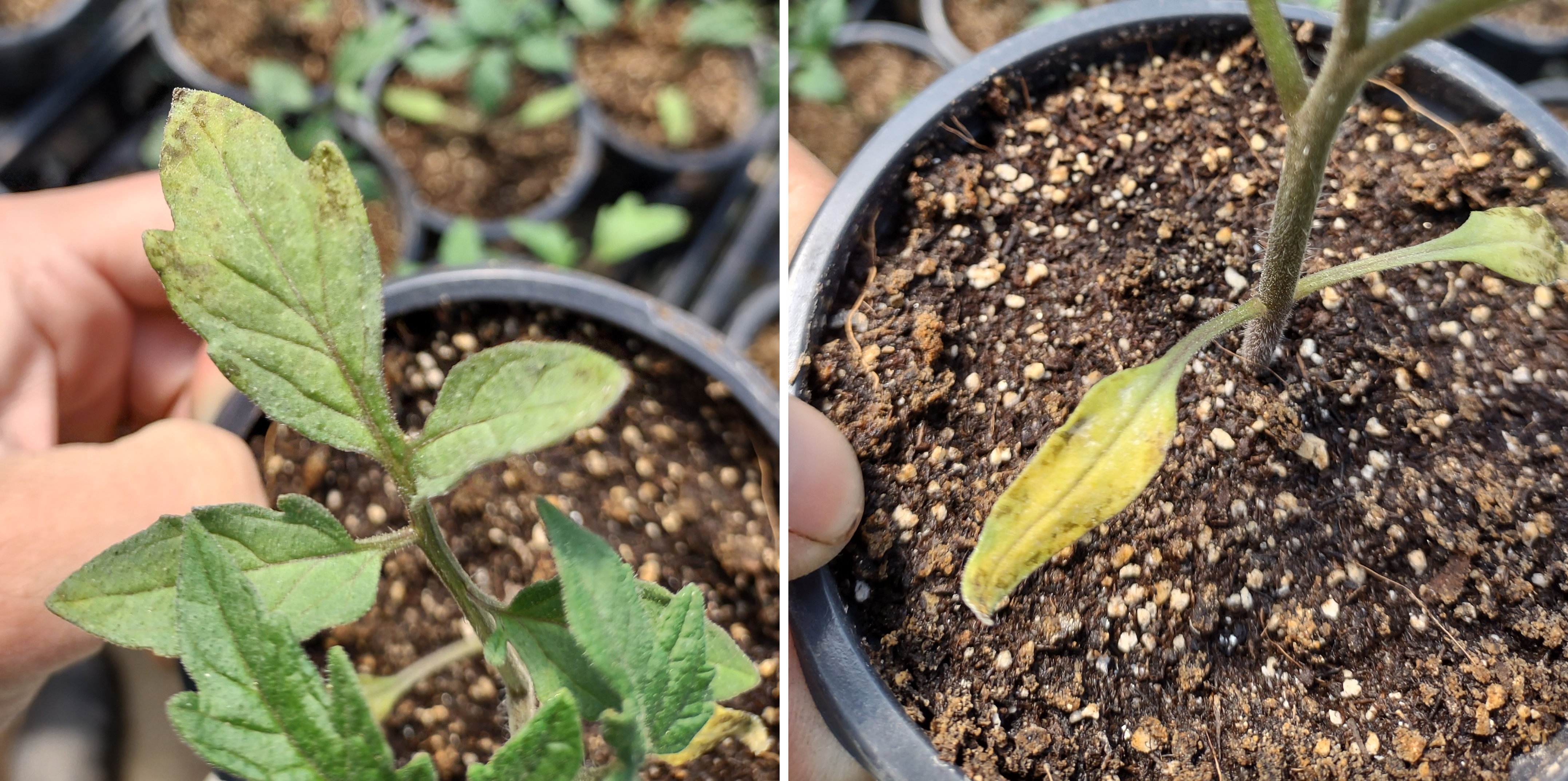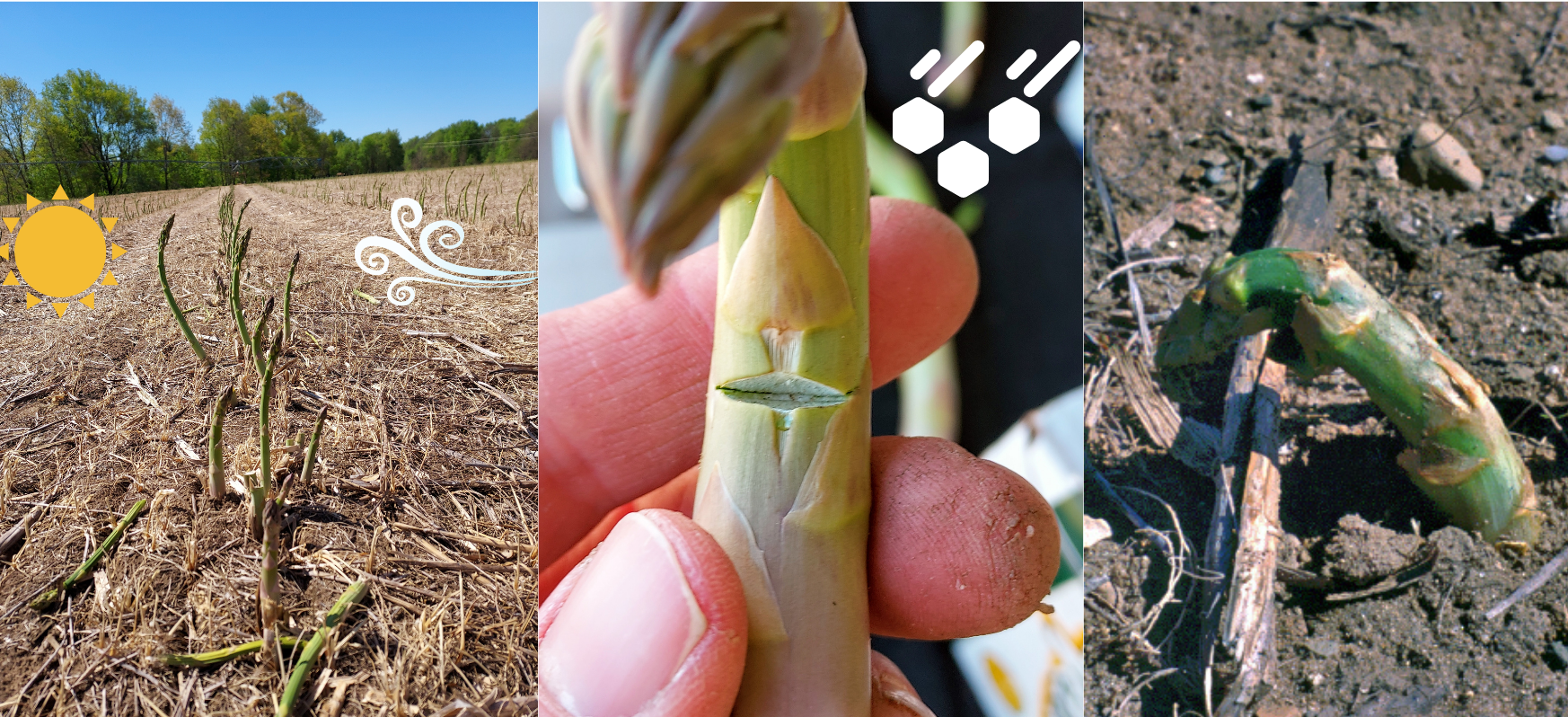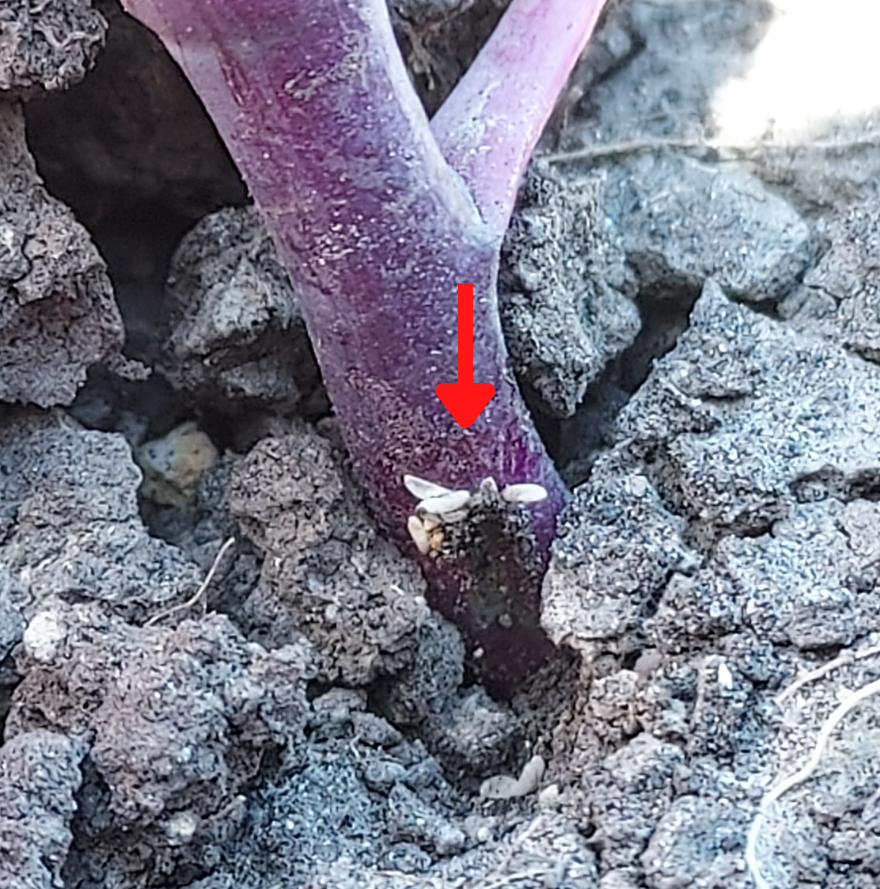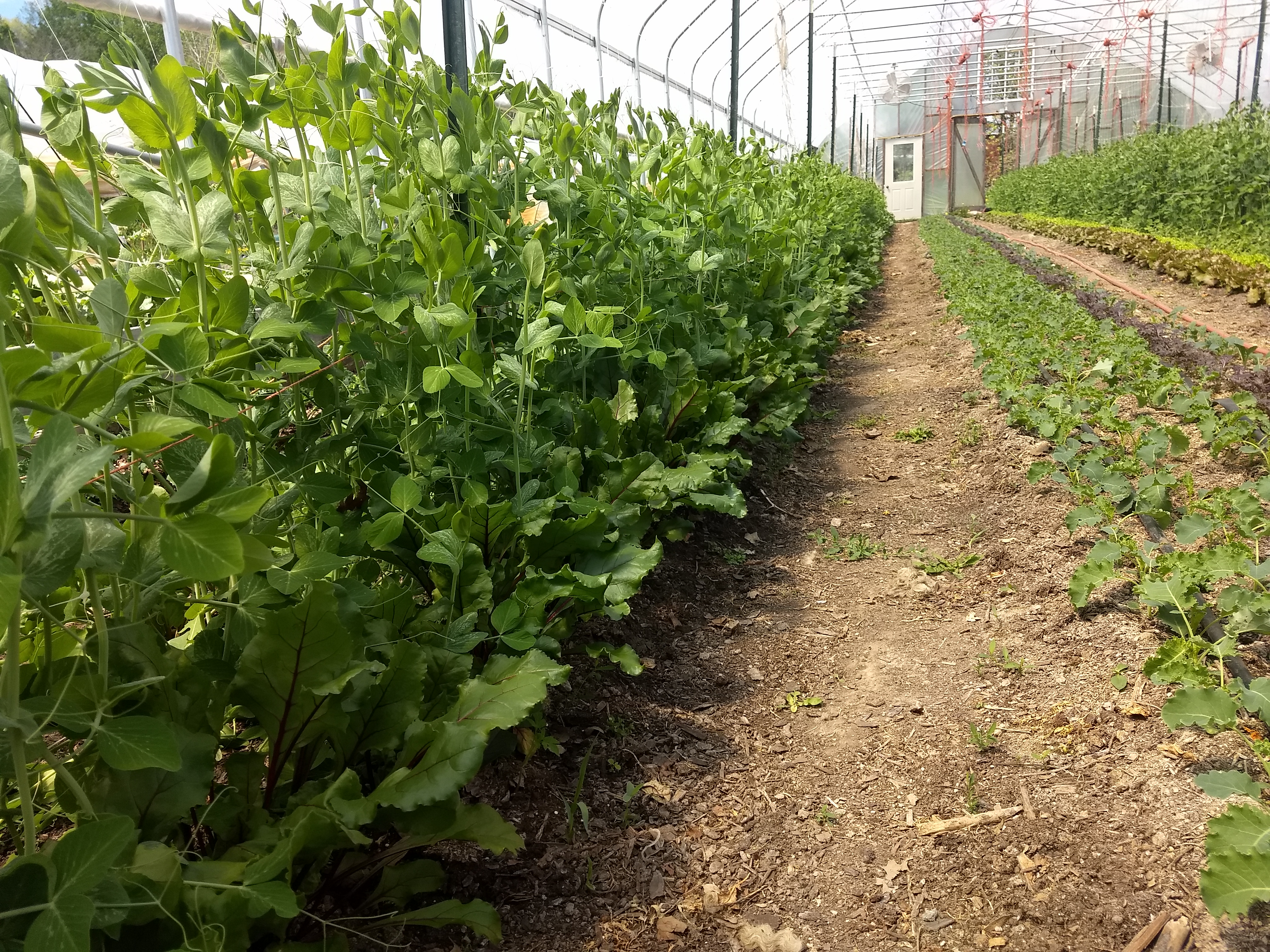Michigan vegetable crop report - May 18, 2022
Planting progress continues through warm ups and cold snaps.

Weather
Watch Jeff Andresen’s weather update.
Last week saw record-breaking max temperatures in parts of the state, with mean temperatures 10-15 degrees Fahrenheit above normal. Precipitation varied a lot. The southwestern lower had little or no rainfall while localized areas in Oceana and Newaygo counties got multiple inches in a few hours. There was an explosion in phenological development. Degree day totals (base 50 F) jumped from one to two weeks behind on May 8 to a week or more ahead by today. We saw summer-like soil drying with potential evapotranspiration totaling 1.25-1.5 inches for the past week.
The forecast calls for:
- Variably cloudy and warmer weather Thursday in most areas. Showers and thunderstorms developing northwest during the afternoon and evening.
- A windy and much warmer Friday and Friday night with showers and thunderstorms possible in most areas.
- Showers likely south Saturday. Cooler with scattered showers possible Sunday south, mostly dry north.
- Precipitation is forecast to total 0.75 inches over the coming week for most of the state with higher totals possible in the southern lower.
- Temperatures warming from highs in the 50s/60s Wednesday to the 60s/80s Friday. Lows in the 40s Thursday to the 50s and 60s Friday falling back to the 30s and 40s through this weekend. Scattered frost possible north this weekend.
- Medium range guidance calls for cooler and wetter than normal weather next week.
Help is here: Get plugged into the new Enviroweather
Do you need help with setting up an account and dashboard on Enviroweather’s new website? You can send an email to eweather@msu.edu with the weather stations, crops and models that you are interested in, and we’ll set it up.
Herbicide injury
It is getting close to the time when herbicide injury will become something to look out for. We met a grower last week who has made scouting for drift damage a new spring routine, similar to scouting for insects or disease. The faster you can respond with a report to MDARD, the more likely they will be able to recover residue that can be used as evidence of misapplication. MDARD is also likely to audit your own records as a part of their investigation.
Greenhouse management
Michigan State University’s Dave Smitley and Mary Hausbeck have updated their greenhouse insect and disease management recommendations for the 2022 greenhouse season. Pay special attention to individual labels as they relate to vegetables and herbs. The crop’s end-use influences labeling.
Yellowing of the oldest leaves, browning leaf tips, and then falling off in sequence up the plant. General lack of vigor, wilting, backsliding, and death. These are all signs of root damage. In a recent visit to a transplant house, we observed this in a variety of peppers, tomatoes, and eggplants after they were potted up into larger containers. The reason? High salt content in the potting media burned the roots. The potting mix was compost-based and was apparently mixed with a ratio that was too rich for these transplants. High salts can also prevent emergence from seeds.
If you have witnessed similar symptoms, you can check for the problem using an electrical conductivity meter (EC). This is a measurement of the amount of salt in a solution and is used as an indirect metric for fertilizer levels. More fertilizer equates to higher EC. Also, with more minerals in well water, EC also increases.
The units for EC can be confusing. The standard unit is milliSiemens per centimeter (mS/cm). This is the same as millimhos per centimeter (mmoh/cm). It measures the conductivity of a solution, which is directly related to salt content. Important elements-including Nitrogen and Potassium-come in the form of salts. So it is an indirect measure of how much of these salts are available in solution around the roots.
To measure EC of water, simply collect it in a container and take a reading with your meter before adding fertilizer, and then again after. The difference between those measurements is the EC of the fertilizer. To measure the EC of potting media, make a slurry with a 2:1 ratio of media and distilled water by volume. After about 30 minutes, take a measurement. For other ways to do it, read more in the article “Keeping in Front of the Curve: pH and EC Monitoring.”
|
Table 1. Soluble salt guidelines for greenhouse growth media. From “Greenhouse Growth Media: Testing & Nutrition Guidelines” by Darryl D. Warncke and Dean M. Krauskopf, 1983. | |
|---|---|
|
1 part media to 2 parts distilled water (mS/cm) |
Comments |
|
0.00 - 0.25 |
Very low salt levels. Indicates very low nutrient status. |
|
0.25 - 0.75 |
Suitable range for seedlings and salt-sensitive plants. |
|
0.75 - 1.25 |
Desirable range for most established plants. Upper range may reduce growth of some sensitive plants. |
|
1.25 - 1.75 |
Slightly higher than desirable. Loss of vigor in upper range. OK for high-nutrient-requiring plants. |
|
1.75 - 2.25 |
Reduced growth and vigor. WIlting and marginal leaf burn. |
|
2.25 + |
Severe salt injury symptoms with crop failure likely. |

Crop updates
Asparagus
Growers were breathing a sigh of relief as cooler weather made the pace of harvest more manageable Monday.
Asparagus beetles and eggs were present in known hotspots in southwest and west central Michigan. Beetles were feeding on spear tips, bracts and the sides of spears in hotter spots, in others there was just an occasional egg. One experience-based note: Asparagus beetle is not as active during cool weather, right when it is easiest to spray. This means cool-weather sprays may only contact a percentage of the population. So, keep an eye out in coming days even if you spray this week. Products with one-day preharvest intervals (PHIs) include formulations of carbaryl, acetamiprid (e.g., Assail) and methomyl (e.g., Lannate). Permethrin also has a one-day PHI but is probably best reserved for cutworms.
Many things cause asparagus to crook. How can you tell what it is? Crooking happens when one side of the spear grows more quickly than the other. It is kind of like a slinky moving down the stairs (one side moves faster than the other and it bends). Growers see this happen when cool, westerly winds keep one side of the spear cooler than the sunward side. Windblown sand can cause the same crooking by injuring the windward side. Purple spot can then develop as spores colonize sand strikes, especially if it is wet and cool. Hail can injure one side of the spear and not another.
Last are the biological causes, which can make spears crook in all kinds of directions. Phytophthora asparagi is a pathogen that lives in the soil. Heavy rainfall can splash infested soil onto the side of spears. Infected spears then develop dark, water-soaked spots and crook before turning sickly yellow and shriveling. This is most likely to occur in low spots in fields and/or gullies after heavy rains.
Finally, dark-sided cutworm can feed on the base of spears to cause crooking. Caterpillars are not difficult to find if this is the cause; dig around in the top few inches of soil around injured spears.

Carrots and celery
Aster leafhopper collection should commence shortly. It will be good to check oat and wheat windbreaks and celery after the coming week; weather will feature southwest to northeast flow, which can transport insects from southerly areas.
Cole crops
Cole crop insect pests were present in leafy brassicas this week, including flea beetle and imported cabbage worm eggs and small caterpillars. Small caterpillars can be controlled with Bt based insecticides, which conserve beneficials that contribute to control of other pests. Either the “aizawi” or “kurstaki” strains will work. For small scale growers, row cover can be effective for the early onslaught of flea beetles, in addition to providing protection against cabbage maggot and caterpillars.

Speaking of cabbage maggot, it has kicked into higher gear; it is time to keep row covers on or apply insecticide. Peak egglaying is forecast for the next week based on degree days at the Allegan, Fennville, Hudsonville and Grant Enviroweather stations. Michigan State University Extension found eggs in Allegan County last week, and Ottawa and Kent County this week. Some maggots had already hatched from earlier egglaying. Eggs are mostly laid in the soil, in roughly a 0.25-0.5-inch cylinder centered on the stem or crown of the plant. This is the zone that is best targeted for insecticide applications. Getting product to that location means one unhappy thing: high water volume.

How can this be accomplished? Banded applications allow product and water to be concentrated in the target zone, while keeping rates reasonable at the field level. Unless you use GPS, setting up a bander to do one planter pass at a time makes sense, that way the band doesn’t miss rows. To accomplish this, you could plumb a separate line and set of nozzles on your regular boom sprayer at your row spacing, and switch between the banded nozzles and the regular boom with a valve. Creative growers can come up with additional ideas!
Given peak is upon us, west central brassica root crop growers could consider high water volume applications of products including Radiant, Entrust or Exirel. Read more about this in “Controlling cabbage maggot in turnips with the Lorsban ban” from Michigan State University Extension. After peak passes, growers could consider switching back to a pyrethroid like Mustang Maxx.
Growers of leafy brassicas can use tray drenches of Verimark. Banded applications of Mustang Maxx may also be helpful when and where Verimark is not used. A 2(ee) label describes this use.
Cucurbits
Striped cucumber beetle was out and about in Kent County early this week. This pest can emerge in masse from overwintering to overwhelm seedling cucurbits. FarMore FI400 is a nice seed treatment providing protection right when plants need it most. If you are planting untreated seed, Admire (a.i. imidacloprid) and Belay (a.i. clothianidin) carry this pest on their label and can be applied to the soil in various ways, to provide systemic protection like the seed treatments.
On the organic side of things, Surround is a kaolin clay product that may be used to protect plants when they are young. It could be applied in a few applications to get plants up to the point where they can tolerate cucumber beetles. Listen to this podcast episode to learn more. Row covers are effective for small-scale growers.
Greens
Flea beetles were out and getting busy on several species of leafy greens this week. Row covers are effective. One grower I met last week has been experimenting with using drop seeders instead of pinpoint seeders and Jang gangs. The result has been a thick bed without walking paths for harvesting with a greens harvester.
Onions/garlic
More bulb onions, green bunching onions, and leeks were being transplanted this week. Garlic is around 12 inches tall.
Direct-sown onions were in various stages this week, from just emerging to having a true leaf developing. Goaltender can be applied at the one-leaf stage (one true leaf with a second one coming) to help with weed control.
Peas/beans
Peas were flowering in a hoophouse in Midland County this week. Beans are being seeded. Planting of processing peas was on the to-do list in west central Michigan.
Rhubarb
Field rhubarb was starting to flower this week across the region. Remove flower stalks to maintain plant energy on stalk and leaf production. This can increase longevity of plantings as well, so that more energy ends up back in the root system instead of in developing seeds.
Root crops
On high intensity small farms where herbicides are not used very much, it is common to see warm season crops underplanted with root crops to make that space pay until the fruiting vegetables begin to bear. This week, radishes and turnips were being harvested in Midland County, with table beets not far behind.

Ethan Tippett (tippet10@msu.edu), a student in Mary Hausbeck’s vegetable disease pathology lab, is on the lookout for root rots in root crops. Please reach out to him at any time this year if you see something affecting your various root crops at the root level. He will come and check it out for his project, but also let you know what he finds out.
Sweet corn
Sweet corn planting continued this week on farms big and small. European corn borer degree day models suggest that their emergence and first flight are still a week or more away. A trapping network is scheduled to begin this week. First generation corn borer is typically of less concern, but it can do some whorl feeding.
A quick note while there is still time for action: Getting product right on the silks is critical for earworm control. Drop nozzles are one way to do this but are a big pain as they snag on the crop. Canadian colleagues recently tested out the Beluga Drop system, which is supposed to snag less. Check out their article on using the Beluga Drop system in corn.
Strawberries
Strawberries are in full bloom right now after the warm temperatures last week, with some fruit formation starting as well. We are still not clear of freeze risk. This coming Sunday could get into the 30s. Open blossoms can be damaged at 30 F, and fruit at 28 F.
Fruiting vegetables
Determinate varieties in the most advanced cases are beginning to blush. Indeterminate hoophouse tomatoes are around 5 feet tall, and pruning has been underway to focus maximum-sized fruit loads on one or two central leaders. If this is your first time, here is how you prune.
At the crotch of every leaf and stem, an indeterminate tomato will attempt to grow a new stem. You will soon notice that those stems will also have leaves, and those crotches will also have new stems, and so on and so forth. These are called suckers. More stems means more fruit, but smaller sized, and delayed ripening among dense foliage. So, around the time of the first flower truss blooming, begin pruning. Choose one or two stems to be the primary leaders, and then clip out the suckers from between the leaves and leader stems.
For field production of indeterminate tomatoes, this process does not typically take place. At least, not as religiously as it does in a hoophouse where ventilation is important and dense foliage breeds disease faster.
Events
- May 23, 5:30-7 p.m. - Monday Night Southwest Michigan Fruit IPM Meeting (RUPS available)
- May 24, 7-8:30 p.m. - Taking Varroa Mite Seriously, Seven Ponds Nature Center, Dryden, MI
- May 25, 12-1 p.m. - MSU Hop-Chat bi-weekly webinar
- May 25, 1:30-2:30 p.m. - MSU Chestnut Chat bi-weekly webinar
This work is supported by the Crop Protection and Pest Management Program [grant no 2021-70006-35450] from the USDA National Institute of Food and Agriculture.



 Print
Print Email
Email

